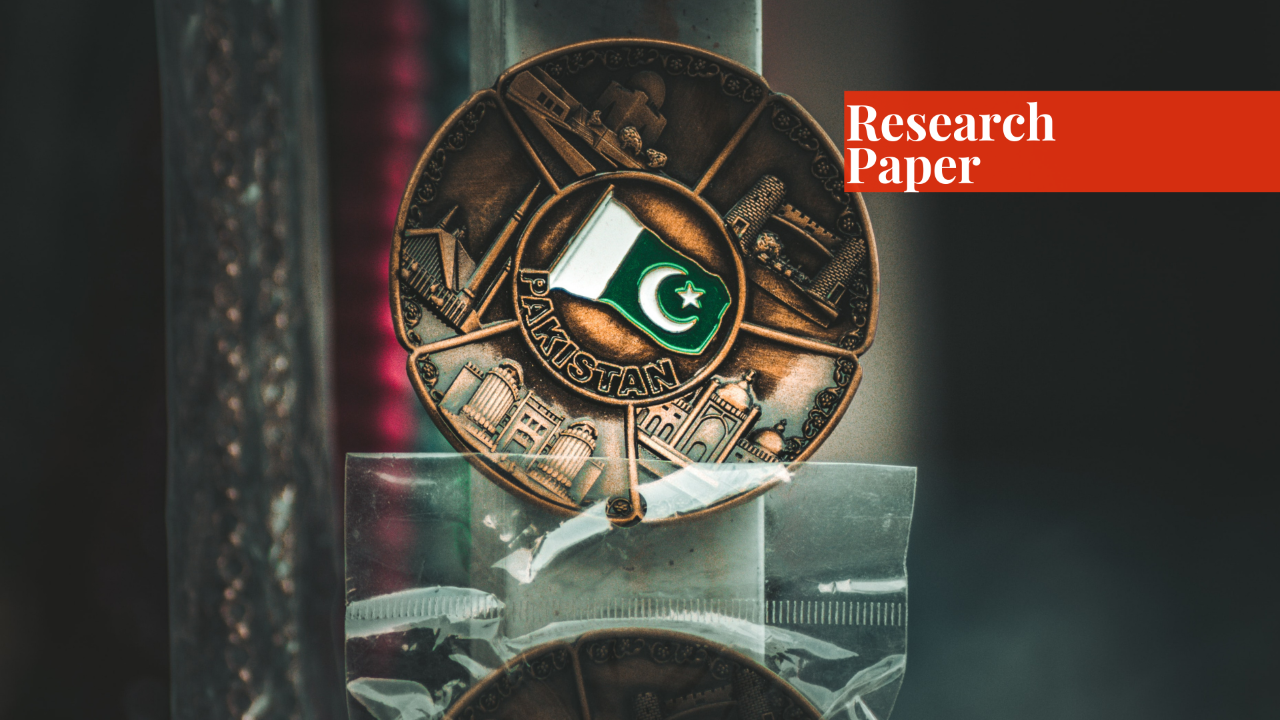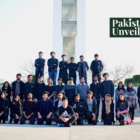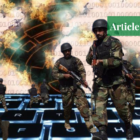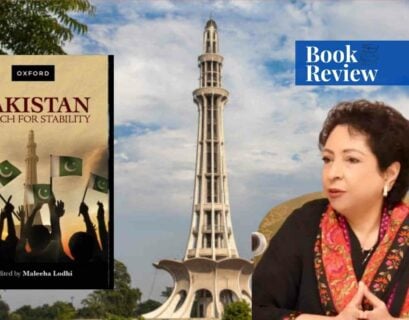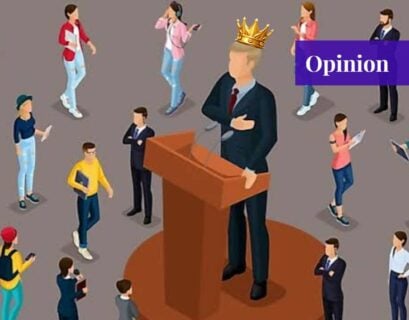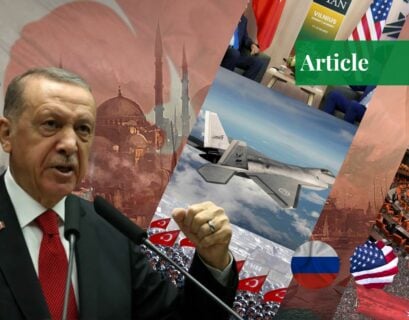Mr. Uzair Bin Farid completed his undergraduate degree from Quaid-e-Azam University before pursuing his Master's in Economics from IBA Karachi. He has a keen interest in IR, global politics, and strategic issues.
Introduction to Pakistan’s Foreign Policy
Pakistan’s foreign policy has always been hard-pressed by difficult choices. Soon after independence, the ruling establishment of the country realized that it will not have a foreign policy if it does not have a state. Thus, the viability and protection of the state came to dominate the choices made in the domain of foreign policy. From the Indian side of the border, people started making statements that Pakistan would soon falter on the rocks of post-independence problems.
Sardar Patel, for one, was of the view that Pakistan was not a “viable” state and it “could not last” (Sattar 2020). Even Jaswant Singh in 1998 was describing Pakistan as a “failed state” (Malone and Mukherjee, 2009). Thus, it fell heavily upon the leadership of the new state to prove its detractors wrong.
Soon after partition, Pakistan and India faced off on certain matters of assets redistribution, division of armed forces, and water rights. Pakistan unwittingly had to submit to the Indian demand of paying charges for water flowing into its territory. Thus, early on, India adopted the role of a regional hegemon with respect to Pakistan, so as to benefit from the differences of power between the two countries (Sattar 2020).
No wonder, Gandhi had to resort to fast unto death to persuade the Nehru government to pay Pakistan its due share from leftover British assets, partly for which he ultimately had to pay for, with his life (Singh 1990). It boils down to the fact that both Pakistan and India started off on very different foreign policy paths.
Pakistan, for one reason or the other, was obliged to cozy up to western powers for its security, but this too did not help Pakistan to an extent that was inadvertently expected. Being the stronger neighbor of Pakistan, India also forced and held hostage the foreign policy choices of Pakistan. The suspension of talks over Kashmir after Nehru came to know of negotiations between Pakistan and the US, is but one example (Sayeed 1964).
The policy decisions to go by the dictation of the United States in major international conferences and conflicts also brought Pakistan at odds with other Islamic countries, especially Egypt in the wake of the Suez crises (A. S. Khan 2006). Thus, we see that during the decade of fifties, Pakistan took such policy decisions in the pursuit of its foreign policy which came to shape the subsequent intermittent reliance on western bankrollers for Pakistan’s rescue from economic and strategic disasters vis-a-vis India.
India, on the other hand, became the leader of the Non-Aligned movement and charted its own path of forging balanced relations with both eastern and western blocs. The dilemma of Pakistan’s foreign policy continued well into the twenty-first century when Pakistan had to side with the United States in its global “War on Terror.”
All the while, when the United States was fighting its forever wars, there was an extraordinary development taking place on the global stage. China was continuing to grow with its double-digit growth rates (HU and Khan 1997) and vindicating the communist one-party rule (Smith 2020; (Cunningham, Saich and Turiel, 2020) by lifting millions out of poverty.
Whether the Chinese system is sustainable or not still remains to be seen, but one thing is becoming more and more discernible. The shift in global power from the west to the east [read: China] (Layne 2012).
This rare moment or a “critical juncture” as defined by (Acemoglu and Robinson 2012) in global as well as the national history of Pakistan, which is still in a phase of transition from the old-equilibrium of Pax Americana to some form of Sino-American shared world order in the future, has presented Pakistan with an opportunity to finally raise its hands, declare its independence of action and embrace the notion of strategic autonomy for its own good.
Sources of Autonomy
Autonomy means “the freedom for a country, a region or an organization to govern itself” or “the ability to act and make decisions without being controlled by anyone else” (Hornby, 2000). States exercise autonomy out of primarily two reasons. First, which is more fundamental, and abstract, is rooted in the concept of sovereignty.
Sovereignty is defined as “complete power to govern a country or the state of being a country with freedom to govern itself” (Hornby, 2000). A legal definition of sovereignty has been given as a “residuum of power which a State possesses within the confines of International Law”. It is a matter of “degree” as to how much sovereignty is exercised by each state given the restrictions imposed on its actions and conduct by the international order of the society of states (Starke n.d.).
The other source of autonomy is more pragmatic and result-oriented. It is explained through the strategic long-term interests and needs of the state. If states find it in their long-term interest to form an alliance with other states, they will certainly do so given their security needs, like in the case of Japan (Maizland and Xu, 2019) and Germany in the post-war order.
Similarly, if states find it profitable to enter into agreements of free trade and openness, they will certainly do so given their economic needs and aspirations like the Rome Treaty of 1957 establishing the European Economic Community (EEC). Strategic Autonomy is, thus, the choice and ability to follow and protect the interests of one’s own state (Biscop 2018).
Putting the national interests over and above all other expedients in the choice of foreign policy decisions is the broadest definition of strategic autonomy. This choice emanates not from the exercise of sovereignty, as much as it springs from the necessity to achieve the objectives of national existence.
Autonomy should be used as a stratagem and not embraced as a matter of national ego. In simplest terms, strategic autonomy enables a state to say “yes” when it suits its national interest and to simply say “no” when it doesn’t. The ability to make such independent decisions in face of strong-arming and threats of coercion by stronger states lies at the heart of the logic in favor of embracing strategic autonomy.
Defining Strategic Autonomy for Pakistan
Historically, strategic designs and plans mostly involved military and war-making adventures. Since communication between distant states was a long, tedious, and costly process, war and plunder were quick ways of making wealth. The development of modern communication networks and the revolution of information technology, have increased the importance of economic success and open-ended trade opportunities in the exercise of strategic autonomy (Bento n.d.).
In the aftermath of the Second World War, the emergence of a bipolar world and the dawn of the Cold War were at the same time, contemporary with the wave of decolonization in parts of Africa, Asia, the Middle East, and the Far East (Lowe n.d.). The drawing up of boundaries on maps spread out on tables in the offices of colonial administrators cut through the heart of historical peoples, dividing their lands overnight.
The Sykes-Picot agreement, which carved Lebanon out of Syria for the French, after the rout of the Ottoman forces, was reached secretly in a “letter” (Fisk, 2006). The same can be said of the decision by the boundary commission between India and Pakistan (Sattar, 2020). To this end Stanley Wolpert (2006) writes:
…Barrister Sir Cyril Radcliffe, who had never before set foot on Indian soil, was chosen to chair both commissions. He would fly out to undertake in a month, work that should have taken at least a year to do properly. Once his job was done, Radcliffe left India, never to return, fearing both sides would try to kill him. Nehru and Mountbatten agreed that the terms of reference or the boundary commissions should be very simple and brief, leaving them maximum flexibility to change proposed lines of demarcation in Punjab and Bengal at the last moment, should “other factors” than the contiguous majority areas of Muslims and Non-Muslims, require alteration. In Punjab, one major “other factor” was to assure India winter highway access to the Vale of Kashmir…
Thus, many problems of seemingly ideological character were created even before the emergence of modern nation-states like Pakistan. These “congenital problems” like the Kashmir dispute, as these shall be called in the rest of the argument, came to influence heavily, the decisions of the ruling elite in post-independence administration. Resolution of the Kashmir dispute lingered on and Pakistan got more sucked in the vertigo of Indian adversity.
During the course of its seventy-year history, Pakistan did take some bold steps to assert its autonomy and sovereignty like going nuclear against stiff opposition from the western alliance, but this too was essentially a security-driven initiative, which fortunately put Pakistan on an equal footing with India, on a strategic level in the military domain. Here, one may argue that the exercise of sovereignty to conduct nuclear explosions was a political decision (Morgenthau, n.d.) but it is left out for separate research.
The cost, however, which Pakistan had to pay for again getting back into the good books of the West after the nuclear explosions of 1998, particularly the United States, was by joining the “war on terror” which proved to be costly enough (Abbas, 2008). The guarantee of security under the nuclear umbrella presents positive consequences for Pakistan only if they are pursued.
Nuclear power only serves to make the exercise of autonomy as a strategic asset more “efficient” (Monsonis 2010). It has changed the whole way of thinking about war and achieving strategic objectives. War as a “real political instrument” to attain certain ends (Starke n.d.) is now avoided at all costs. Now, policymakers in a nuclear state with congenital problems like Pakistan are forced to think on the lines of how not to go to war and still achieve their long-term objectives of stability and economic growth.
Therefore, it is important for a state like Pakistan which is facing congenital problems to devise an autonomous policy of not siding with any power which is being unreasonable, or in aggression, against any other state. Strategic Autonomy thus takes the role of an all-encompassing strategy that pursues the national interests in the foremost without any detriment to the interests of other states.
However, global politics and international relations are complex, dynamic, and sometimes a murky affair. So, it becomes imperative to never let go of the chord of established rules of International law, in deciding whether to side with one or the other side or even to sit on the fence, but here the problem arises that International law is a customary affair, only resorted to as an “ultimate demonstration of weakness” (Kaplan 2014).
There is no overseeing force to make sure that nation-states comply with the rules of international law. It is, most of the time, only good faith that is relied upon to see if nations comply with International law or not. Strong states do not necessarily follow the precepts of international law for the conclusion of disputes. This has been evidenced by the invasion of Iraq by the United States and by the lingering problem of the Palestinian State (Fisk 2006).
This presents a dilemma for a weak state like Pakistan, on the course of action, to be adopted, like when it was faced with the situation after the September 11 attacks in New York. This can be circumvented by visiting the “Allegory of a Reasonable Cowboy.” This allegory has been constructed and is further developed for the purposes of this note, on the basis of Hobbesian argument that states are like individuals [read: humans] and they tend to remain in the international domain in a perpetual state of anarchy (Kaplan, 2014; Rose, 2021).
In today’s world of rule-based order, international institutions, and information technology, however, the state of anarchy remains subtle enough to be discernible.
Allegory of an Honorable Cowboy
States are like humans. They are born; they die, too, as the case of former Yugoslavia attests (Sekulic 1997). They have defined boundaries just like humans’ homes. And just like humans, they fight too. Sometimes violently, while at others, secretly trying to harm their rivals through subversive activities.
They, too, have developed a system of laws to govern their conduct known as International law. The decisions which become decisions of States are taken by individuals or groups of individuals [read: parliaments]; thus, they come about as a result of humans’ deliberating exercise. Decisions taken by parliaments can be said to have prevented aggression against other states, but even in constitutional democracies, there are other means which essentially bypass the parliament to initiate an act of aggression like in the United States, the presidential powers of Authorization for the Use of Military Force (AUMF).
“It is a strange desire to seek power and to lose liberty” as Francis Bacon described the inherent immoderate proclivities of humans (Bacon 1909-14). As for States, they, too, like to dominate. As Hans. J. Morgenthau (n.d.) aptly put it:
…the tendency to dominate, in particular, is an element of all human associations, from the family through fraternal and professional associations and local political organizations, to the state…
Further along he quotes a Dead Sea scroll as stating:
…What nation likes to be oppressed by a stronger power? Or who wants his property plundered unjustly? Yet, is there a single nation that has not oppressed its neighbor? Or where in the world will you find a people that has not plundered the property of another? Where indeed…?
States are abstract conceptions that are, however, defined and based on material and tangible conceptions. Montevideo Convention of 1933 on the Rights and Duties of States, defines a State as “a person of International Law”, possessing a permanent population, fairly permanent territory, a government, and the capacity to enter into relationships with other States (Starke, n.d.).
States are run by humans. Decisions that are taken by humans who represent a State, whether the highest offices of president or prime minister or some ministerial office like the foreign office, will ultimately be treated as decisions of states: the agency argument (Dong, 2021). Romania, though a small state, played a much more important role in the inter-war period, simply because of its foreign minister Titulescu and the atrocities of the Second World War were committed by Germans on the orders of one man, the Fuhrer himself, Adolf Hitler (Morgenthau, n.d.).
Thus, individual men can come to direct the fates of states notwithstanding their size and other attributes. Crimes committed by states also remain on the consciousness of their peoples and leaders, only if they are sensitive enough. Willy Brandt, the chancellor of West Germany, went down on his knees to ask forgiveness from the Jews of Poland’s Warsaw Ghetto in December 1970 (Diamond, 2019).
States, thus like humans, when they feel necessary as persons of International law, breach International law to achieve their desired ends. There is no strict law of the land to guide or direct their behavior. This makes for correct parallelism between the wild west as the world and states as cowboys.
Cowboys are gunslingers, like States with strong militaries who want to project power. When there is a divergence of beliefs and values, which states want to project, they can only do so with the projection power (Kaplan, 2001). This holds the most truth in the case of great-power rivalries. Wild West represents the World or the international realm where a state itself can decide what is best for it. It cannot simply rely on other states to do this job for it.
A reasonable cowboy will always make sure that his gun is polished, oiled, loaded, and of the best metal so as not to choke when the time of action arrives. The reasonable cowboy must also make sure that when it comes to a “Mexican Standoff” (Zarif, 2021), he is quick enough to reach for his gun. At the same time, the reasonable cowboy would see to it that the need does not arise for his slinging the gun.
He must be reasonable and shrewd enough to find his way out of a dispute between other ruddy cowboys. Now when there are multiple cowboys and they cannot agree on some contentious dispute and it seems that interjection on part of the reasonable cowboy is needed, then he must make sure that he is cool-headed and try to diffuse the tension between the ruddy cowboys, which are intent on slinging their guns.
The expertise of the reasonable cowboy should not be as much to pull himself out of the dispute without incurring any harm, but if possible, he should be able to make the ruddy cowboys see reason, a variant of which was termed as “psychological approach” by Nehru (Rana, 1969). He should make them look at the dispute objectively to avoid confrontation.
The test of the reasonable cowboy, however, will come when he has to make a choice in favor of one of the two ruddy cowboys. He will then have to take the side of that ruddy cowboy who is reasonable enough, given that the reasonable cowboy reached his conclusion with the coolest head possible and considering all the possible consequences of his conclusion.
Taking sides, however, precludes any use of force in favor of one, and against the other. All of this is possible if it is established that the reasonable cowboy can be fast enough with his gun to out-maneuver his unreasonable opponents. When a reasonable cowboy sides with one party, it should be to establish a customary precedent that no one can act unreasonably and still eat their cake in the wild world of perpetual anarchy.
“Among reasonable men, problems of business could always be solved” (Puzo, 1969). This allegory should inform and enlighten the agencies of Pakistan’s foreign policy establishment and its diplomats. The role of a nuclear state like Pakistan should be of a reasonable “cowboy” between two or more “ruddy cowboys”.
While protecting its own interests, Pakistan should make sure that it brings the other belligerent cowboys [read; states] to be reasonable about a dispute. Pakistan, the reasonable cowboy, should be able to tell the ruddy cowboys what they must do to protect their interests and how the ruddy cowboys can come to resolve their disputes without actually confronting each other.
This use of cowboy diplomacy will give Pakistan enough room to maintain an independent course of action in the future order, to protect its own interests, while balancing the demands of ruddy cowboys. A reasonable cowboy should realize the inherent power and force of his ability to reason and make others see reason while dissociating himself from the struggle of “power politics” of ruddy cowboys.
Strategic autonomy, as a policy framework to build upon, for the successful conduct of foreign policy, must be complemented with “cowboy diplomacy” so that objectives of national interest can be secured. The going argument also holds importance in the sense that if a state or its representative cannot be reasoned with, then aligning one’s fate with them should be avoided at all costs.
Hasty decisions without enough reasoned deliberation are a recipe for disaster. In the case of Pakistan, the post-9/11 history of insurgency in the western border areas is a sobering example.
Looking Through the Indian Mirror
Writing in 2013, C. Raja Mohan (2013) was quick to suggest that shifting sands of global power from West to the East, will create a situation for India where it will inevitably have to make a choice between its long-term policy of strategic autonomy or to embrace the new reality. One opportunity came in the form of the United States’ pivot to Asia (Lieberthal, 2011), announced by the Obama administration.
However, the Indian foreign policy establishment did not simply swoon into the arms of the United States. Historically, after independence, India was quick to realize the benefits of remaining non-aligned in the developing cold war rivalry.
Even before the emergence of the Cold War, as the new normal in the global power politics, India, under the leadership of Jawaharlal Nehru, had realized the importance of pursuing an independent course of foreign policy, that would have seen an amicable relation between India and the international society of states, at large.
This independent course of foreign policy was also to ensure that India does not side with any nation against the security of another nation. That sovereignty and security as fundamental rights granted to every state under International law should preclude the possibility that one state sides with another in a great-power rivalry.
Discussing the “intellectual dimensions” of India’s Non-Alignment A. P. Rana (1969) observes:
“…India was to refuse to tie her policy to the interests of any great power so that she was free to cultivate friendly and cooperative relations with all powers. At the same time Nehru believed that system of national independent states, without any empires and extended to the rest of the world, was not viable in itself so that peaceful and friendly cooperation under some sort of world association or federation was inescapable…”
Further along he maintains that:
“…Nehru saw the coming struggle between the U.S.A. and the U.S.S.R. as a continuation of power politics of the sort that had led to the creation and maintenance of empires. He attributed the possible expansionist aims of both these great constellations of power to fear of each other; he believed that fear for their own security would drive them to attain positions of strength against each other, and that if no resistance was offered both, the old sorry tale of empire-building, empire-consolidation and empire justification, would be repeated, if in a new form. The slow and painful gains made by India over a period of more than sixty years could be wiped away in the headlong clash between two antagonists much too powerful to be physically withstood…”
This passage holds great importance at the time of writing this argument. Similar to the heating up of great-power rivalry in the early post-war years between the US and U.S.S.R., differences between China and the United States have also come out in the open with both sides pulling up their socks for a long-drawn strategic face-off (Moriyasu, 2021).
This puts Pakistan in virtually the same position as India must have found itself in its own time when Nehru was trying to balance his version of East against the West through the Non-Aligned Movement. The policy of not siding with any contestant but standing up for peace is the only viable policy for a developing country like Pakistan.
This is in line with Nehru’s thinking when he was mapping the blueprints for India’s foreign policy in his mind. The eastern traditions of community socialism and in the case of Pakistan, the Islamic heritage make it all the more pertinent that the economic welfare (Damodaran, 1981) of the people should supersede all other concerns in the pursuit of Pakistan’s foreign policy.
The roots of strategic autonomy in India’s foreign policy can be traced back even before the granting of independence. The traditions of Gandhian non-violent struggle and Nehru’s flair with socialism came to heavily affect the shape of Indian foreign policy, which Nehru was crafting in his mind for post-independence India (Rana, 1969).
Detractors could argue why Pakistan must look towards India and the genesis of Indian foreign policy? The answer to this question can be had by making recourse to the fact that India made all the foreign policy choices, remaining non-aligned in face of perceived pressures from either of the two rival blocs of the cold war, while Pakistan joined the western camp and its system of alliances primarily because of the Indian menace.
The conflict between the cold war rivals was still a far cry from an actual military face-off. It was relegated to a much lower option because of the dawn of the nuclear age. As has been argued before that the security provided by the nuclear umbrella can be used by Pakistan to adopt a much more independent course of foreign policy.
Wouldn’t it be helpful for Pakistan to learn a lesson from the same rival which forced Pakistan’s hand to go nuclear? Isn’t it a real “tragedy” that Pakistan has seen itself through the Indian mirror for far too long (Kaplan, 2001)? In a world of adversity where you have to win a conflict, you don’t talk down a strategy just because it has been employed by your rival.
If you are shrewd enough then you will try to acquire better weapons than your rival, and if you cannot get your hands on better weapons, then you will at least make sure that you have the same weapons as your rival. Wasn’t this the same argument that led Pakistan to start its own nuclear program, after the Indian explosions of May 1974, codenamed “Buddha Smiles” (Aziz, 2020), to bring strategic balance to South Asia?
Picking up the Trail
Commentators and pundits have been voicing the need for India and the United States to come together and cooperate even more closely (Center for American Progress Task Force on U.S.-India Relations, 2018), with added vehemence after border clashes between India and China in the summer of 2020 (Ganguly, 2020; Borah, 2020).
A reasonable thaw, after cold war estrangement, came in relations when the United States recognized India as a de facto nuclear state by signing with it the Civil Nuclear Cooperation Initiative (Ganguly and Mistry, 2006; U.S.-India Relations, n.d.). Since, India is a democracy, at least in principle (India: Freedom in the World 2021 Country Report, 2021), it makes it a natural partner of the United States in the latter’s strategic competition with China, along with other benefits that come with friendship (Madan, 2021).
Choosing sides has become more of a necessity for the Indian foreign policy establishment, especially in preparation for the post-Covid world (Abi-Habib, 2020). A formal alliance or a bilateral security treaty between the United States and India in the Indo-Pacific, may not become a reality too soon since there are many hiccups in the relationship (Baba and Ogawa, 2021).
India may not be willing to tie itself up with the United States alone (Jaishankar and Madan, 2021; Kaplan, 2014) but its possibility cannot be glossed over (Rachman, 2020). One thing is evident that there will be continued mutual reliance between the United States and India to protect their strategic interests (Tellis, 2020).
India’s economic growth and regional clout do not sit well with China (Curtis, 2008). India is too big and too strategically situated for the United States to ignore (Dave, 2020). This has been evidenced by the growing cooperation between the two countries in areas of defense and intelligence sharing (Garamone, 2018; Thakker, 2020).
This presents an opportunity for Pakistan to pick up the Indian trail of strategic autonomy for its own regional benefits. The ups and downs of the US-Pakistan bilateral relationship are all too evident for Pakistan to keep sticking to its policy of being in the West’s camp (Haqqani, 2013). Opportunities present themselves (Kugelman, 2021) and Pakistan should avail them to break free from the fold of great powers (Editorial, 2021) to establish its credibility as a reasonable cowboy who knows how to sling his gun.
International media and newspapers are replete with references to the start of a new Cold War, this time between the United States and China (Gladstone, 2020). The similarities between the two so-called Cold Wars are too common to ignore (Rachman, 2020) and their difference of geographic arena where the latest is playing out (The Economist Group Limited, 2021).
The start of the last Cold War between the United States and the USSR prompted India to start a movement of Non-aligned countries (Harshe, 1990), primarily to protect its own domestic and foreign interests. Pakistan also faces a stark opportunity in today’s world of great-power rivalry (Friedman 2019). It can break off from the clutches of foreign policy needs of great powers and project a vision of foreign policy based on its domestic needs (Khattak, 2022).
The economic and social needs of the country should be reflected in the foreign policy choices of Pakistan. That can be accomplished by learning from the rival which has so often dictated and clouded Pakistan’s foreign policy judgments. However, there is one unique side to the exercise of strategically autonomous foreign policy and that is Pakistan’s relationship with China.
Pakistan’s strategic relationship with China has helped it so many times in the past. Even during the Covid-19 pandemic, China has been generous enough to supply Pakistan with a million Sinopharm vaccine doses (Al Jazeera, 2021). Pakistan’s strategic relationship with China should not hold it hostage into making choices that would prove to be difficult to manage in the future.
Pakistan and China are too different. They only have common interests and contiguous geography. Pakistan should remain vigilant of the opportunities and pitfalls that its geography presents. Pakistan’s geography should “inform” its maneuvers rather than “determine” them (Kaplan, 2015). As far as interests are concerned, it’s fine that they band together to help each other.
However, sooner or later, the ideological differences between the two countries are going to come to the surface of the relationship. One sticking point in the relationship will be the ethnic Uighur (Britannica, 2020) minority of the Xinjiang region. The persecution by the Chinese state of the Uighurs (Maizland, 2021) has invited condemnation from around the world (Besheer, 2020) but not from the leaders of Muslim countries especially Pakistan (I. Khan, 2019; Ma, 2019).
“Dismissive denials” are going to take Pakistan only too far. The probable end of America’s war in Afghanistan (Felbab-Brown, 2021) and the feared take-over of its government by the Taliban (Boot, 2021) will be a harbinger for more destabilizing movements in the wider region. Threats are already being perceived in non-contiguous countries to Afghanistan, over a possible Taliban takeover which would stimulate other regional dynamics, like the Kashmir issue, for the worse (Miglani, 2021).
The possibility that a radical Taliban government in Afghanistan will motivate and inspire other latent movements of the region for self-determination and independence, as in the past, or look to expand, is a real one (Weinbaum, 1991; Scheuer, 2011). If such a scenario arises, Pakistan’s search for strategic depth in Afghanistan may put it into a difficult position vis-à-vis its Taliban allies and China, since the threat of a revived East Turkistan Islamic Movement (ETIM) becomes a real one.
The ties of ETIM with Taliban and Al-Qaeda for that matter (Bajoria, Fletcher and Xu, 2014) are only going to strengthen in post-US Afghanistan. These ties will be motivated by the extreme ideological underpinnings which have sustained the Taliban movement under extreme international military pressure for the last two decades (Dowd, 2021).
Conclusion
Pakistan’s strategic and foreign policy discourse has made extensive use of terms like “strategic-depth”, “strategic-patience”, “strategic-balance” and “strategic alliances”. It is time that Pakistan add one more term to describe its motivations of foreign policy choices and that is “strategic autonomy.”
This addition will not only introduce a new dimension in Pakistan’s foreign policy direction but also help in the practice and application of other strategic-driven objectives. Pakistan is bestowed with geography that makes the recourse to Hobbesian anarchic world of international domain more pertinent for understanding and making informed decisions.
The 21st-century dynamism of global politics and changing fortunes of power make it important for Pakistan to embrace a more reasonable, radical, and interest-driven course of foreign policy. This route can not be taken, however, if a special batch of diplomats specially trained to be nuanced and practicing a novel form of “cowboy diplomacy” are not put into the field.
“Shuttle diplomacy” of Henry Kissinger (Naftali, 2020), “quiet diplomacy” of Jaswant Singh and Vajpayee (Malone and Mukherjee, 2009), and the more recent “wolf-warrior diplomacy” of Chinese diplomats (Kausikan 2020), are invitations enough for Pakistan’s diplomats to embrace their own brand of “cowboy diplomacy”, since Pakistan has always involved the most, in intercourse with the respective states of these brands of diplomacy.
Pakistan should embrace strategic autonomy not so much because it emanates from Pakistan’s right to sovereignty. Rather, it should do so because embracing strategic autonomy by way of reasonable cowboy diplomacy, will help Pakistan to exercise virtually full sovereignty. Learning from rivals and how they managed to protect their national interests by embracing strategic autonomy (Harshe, 1990), would be a wise choice of maneuvers.
Understanding the need for reasoned eloquence, keeping your distance, staying principled in an anarchic world, leveraging the impact of the US-Afghan war, and making adept use of cowboy diplomacy under the nuclear umbrella will help Pakistan waddle through the treacherous waters of a multipolar world. The need to invoke international law should be the last resort for Pakistan. The game should be played in such a manner that rules out the possibility of checkmate of Pakistan’s move by other powers. At worst, Pakistan should strive to end the game at a stalemate.
References
- Monsonis, Guillem. 2010. “India’s Strategic Autonomy and.” Strategic Analysis.
- Abbas, Hassab. January, 2008. “A Profle of Tehrik-i-Taliban.” CTC Sentinel Vol. 1, Issue. 2.
- Abi-Habib, Maria. 2020. “Will India Side With the West Against China? A Test Is at Hand.” The New York Times, June 19. Accessed April 15, 2021.
- Acemoglu, Daron, and James A. Robinson. 2012. Why Nations Fail. New York: Crown Publishing.
- Al Jazeera and News Agencies. 2021. Pakistan receives second batch of 500,000 vaccines from China. March 18. Accessed April 18, 2021. https://www.aljazeera.com/news/2021/3/18/pakistan-receives-second-batch-of-500000-vaccines-from-china.
- Aziz, Sartaj. 2020. Between Dreams and Realities. Karachi: Oxford University Press.
- Baba , Moyuru, and Tomoyo Ogawa. 2021. “India and Russia move forward with missile deal in blow to Biden.” www.asia.nikkei.com. January 28. Accessed April 15, 2021. https://asia.nikkei.com/Politics/International-relations/India-and-Russia-move-forward-with-missile-deal-in-blow-to-Biden.
- Bacon, Francis. 1909-14. Essays, Civil and Moral. The Harvard Classics.
- Bajoria, Jayshree , Holly Fletcher, and Beina Xu. 2014. The East Turkestan Islamic Movement (ETIM). September 4. Accessed April 18, 2021. https://www.cfr.org/backgrounder/east-turkestan-islamic-movement-etim.
- Bento, Vitor Augusto Brinquete. n.d. “The Economy as a Strategic Theatre; the Relevance of Economy to the Strategic Autonomy of a State.”
- Besheer, Margaret. 2020. At UN: 39 Countries Condemn China’s Abuses of Uighurs . October 06. Accessed April 18, 2021. https://www.voanews.com/east-asia-pacific/voa-news-china/un-39-countries-condemn-chinas-abuses-uighurs.
- Biscop, Sven. 2018. “Letting Europe Go Its Own Way.” Foreign Affairs, July 6.
- Boot, Max. 2021. Biden’s 9/11 Withdrawal From Afghanistan: What to Know. April 14. Accessed April 18, 2021. https://www.cfr.org/in-brief/biden-afghanistan-troop-withdrawal-september-11.
- Borah, Rupakjyoti. 2020. “Why India and the United States Must Come Together.” The Diplomat, June 25. Accessed April 11, 2021.
- Center for American Progress Task Force on U.S.-India Relations. 2018. The United States and India: Forging An Indispensable Democratic Partnership. Center for American Progress Task Force on U.S.-India Relations.
- Cunningham, Edward, Tony Saich, and Jesse Turiel. 2020. “Understanding CCP Resilience: Surveying Chinese Public Opinion Through Time.” Ash Center for Democratic Governance and Innovation. July.
- Curtis, Lisa. 2008. “US-India Relations: The China Factor.” Backgrounder.
- Damodaran, A. K. 1981. “India and Non-Alignment.” International Studies.
- Dave, Aaditya. 2020. The Biden Administration and the Future of US–India Ties. December 09. Accessed April 15, 2021. https://rusi.org/explore-our-research/publications/commentary/biden-administration-and-future-us-india-ties
- Diamond, Jared. May, 2019. Upheaval: Turning Points for Nations in Crises. New York: Hachette Book Group.
- Dong, Wang. 2021. “The Case for a New Engagement Consensus.” Foreign Affairs, April.
- Dowd, Maureen. 2021. Biden Ditches the Generals Finally. April 17. https://www.nytimes.com/2021/04/17/opinion/sunday/biden-afghanistan-war.html.
- Editorial. 2021. Improving ties with Russia. April 9. Accessed April 16, 2021. https://www.dawn.com/news/1617242.
- Felbab-Brown, Vanda. 2021. The US decision to withdraw from Afghanistan is the right one. April 15. Accessed April 18, 2021. https://www.brookings.edu/blog/order-from-chaos/2021/04/15/the-us-decision-to-withdraw-from-afghanistan-is-the-right-one/.
- Fisk, Robrt. 2006. The Great War For Civilisation: The Conquest of The Middle East. London: Harper Collins.
- Friedman, Uri. 2019. The New Concept Everyone in Washington Is Talking About. August 6. Accessed April 17, 2021. https://www.theatlantic.com/politics/archive/2019/08/what-genesis-great-power-competition/595405/.
- Ganguly, Sumit. 2020. “India and the United States Need Each Other Mostly Because of China.” Foreign Policy, August 3. Accessed April 11, 2021. https://foreignpolicy.com/2020/08/03/india-united-states-balancing-china-threat/.
- Ganguly, Sumit, and Dinshaw Mistry. 2006. “The Case for the US-India Nuclear Agreement.” World Policy Journal 11-19.
- Garamone, Jim. 2018. “U.S.-India Defense Cooperation a ‘Key Driver’ of Overall Relationship.” www.defense.gov. Spetember 6. Accessed April 15, 2021. https://www.defense.gov/Explore/News/Article/Article/1622396/us-india-defense-cooperation-a-key-driver-of-overall-relationship/.
- Gladstone, Rick. 2020. How the Cold War Between China and U.S. Is Intensifying. July 22. Accessed April 16, 2021. https://www.nytimes.com/2020/07/22/world/asia/us-china-cold-war.html
- Haqqani, Hussain. 2013. Magnificent Delusions. New York: PublicAffairs Books.
- Harshe, Rajen. 1990. “India’s Non-Alignment: An Attempt at Conceptual Reconstruction.” Economic and Political Weekly 399-405.
- Hornby, A S. 2000. Oxford Advanced Learner’s Dictionary of Current English. Sixth.
- HU, Zuliu F., and Mohsin S. Khan. 1997. “Why is China Growing so Fast?” IMF Economic Review 103-131.
- 2021. India: Freedom in the World 2021 Country Report. Accessed April 13, 2021. https://freedomhouse.org/country/india/freedom-world/2021.
- Jaishankar, Dhruva, and Tanvi Madan. 2021. “How the Quad Can Match the Hype.” Foreign Affairs, April.
- Kaplan, Robert D. 2014. Asia’s Cauldron: the South China Sea and the End of a Stable Pacific. United States: Random House.
- —. 2001. Soldiers of God: With Islamic Warriors in Afghanistan and Pakistan. New York: Vintage Books.
- Kaplan, Robert D. 2015. “The Revenge of Geography.” Foreign Policy Research Institute.
- Kausikan, Bilahari. 2020. Zeal and China’s ‘Wolf Warrior’ Diplomacy. June 1. https://globalbrief.ca/2020/06/zeal-and-chinas-wolf-warrior-diplomacy/.
- Khan, Adnan Sarwar. 2006. “Pakistan’s Foreign Policy In Changing International Scenario.” The Muslim World.
- Khan, Imran, interview by Stephanie Findlay. 2019. Imran Khan blames crisis on Indian electioneering (March 27). Accessed April 18, 2021.
- Khattak, M.S. (2022). The Unbalanced Foreign Policy of Pakistan. Paradigm Shift. https://www.paradigmshift.com.pk/foreign-policy-pakistan/
- Kugelman, Michael. 2021. “Russia Makes a Power Play in South Asia.” Foreign Policy, April 8. Accessed April 16, 2021.
- Layne, Christopher. 2012. “The Global Power Shift from West to East.” National Interest 21-31.
- Lieberthal, Kenneth. 2011. “The American Pivot to Asia.” Foreign Policy, December 21.
- Lowe, Norman. n.d. Mastering Modern British History. 3rd Edition.
- Ma, Alexandra. 2019. The last major opponent of China’s Muslim oppression has retreated into silence. Here’s why that’s a big deal. July 6. Accessed April 18, 2021. https://www.businessinsider.com/china-muslim-oppression-xinjiang-turkey-silence-2019-7.
- Madan, Tanvi. 2021. “Democracy and the US-India Relationship.” www.brookings.edu. January Friday. Accessed April 13, 2021. https://www.brookings.edu/articles/democracy-and-the-us-india-relationship/.
- Maizland, Lindsay. 2021. China’s Repression of Uyghurs in Xinjiang. March 1. Accessed April 18, 2021. https://www.cfr.org/backgrounder/chinas-repression-uyghurs-xinjiang.
- Maizland, Lindsay, and Beina Xu. 2019. The US-Japan Security Alliance. August 22. https://www.cfr.org/backgrounder/us-japan-security-alliance.
- Malone, David M., and Rohan Mukherjee. 2009. “India-US Relations: The Shock of the New.” International Journal 1057-1074.
- Miglani, Sanjeev. 2021. India’s military chief concerned about US pullout from Afghanistan. April 15. Accessed April 18, 2021. https://www.reuters.com/world/asia-pacific/indias-military-chief-concerned-about-us-military-pullout-afghanistan-2021-04-15/.
- Mohan, C. Raja. 2013. “India: Between “Strategic Autonomy” and Geopolitical Opportunity”.” Asia Policy 21-25.
- Morgenthau, Hans. J. n.d. Politics Among Nations. Fifth.
- Moriyasu, Ken. 2021. Gloves off in Alaska as US and China spar over new world order. March 20. Accessed April 19, 2021. https://asia.nikkei.com/Politics/International-relations/US-China-tensions/Gloves-off-in-Alaska-as-US-and-China-spar-over-new-world-order.
- Naftali, Timothy. 2020. “The Wounded Presidency, Part One.” Foreign Affairs, Best of 2020 ed.
- Puzo, Mario. 1969. The Godfather. London: Arrow Books.
- Rachman, Gideon. n.d.
- —. 2020. A new cold war: Trump, Xi and the escalating US-China confrontation. October 5. Accessed April 16, 2021. https://www.ft.com/content/7b809c6a-f733-46f5-a312-9152aed28172.
- —. 2020. India picks a side in the new cold war. June 22. Accessed April 15, 2021. https://www.ft.com/content/d74d9bda-6822-4f85-9d48-a285a9effe07.
- Rana, A. P. 1969. “The Intellectual Dimensions of India’s Nonalignment.” The Journal of Asian Studies 299-312.
- Rose, Gideon. 2021. “Foreign Policy for Pragmatists.” Foreign Affairs, March-April.
- Sattar, Abdul. 2020. Pakistan’s Foreign Policy 1947-2019: A Concise History. Karachi: Oxford University Press.
- Sayeed, Khalid Bin. 1964. “Pakistan’s Foreign Policy: An Analysis of Pakistan’s Fears and Interests.” Asian Survey.
- Scheuer, Michael , interview by SBS Dateline. 2011. Extended Interview with Michael Scheuer (September 09).
- Sekulic, Dusko. 1997. “The Creation and Dissolution of the Multinational State: the Case of Yugoslavia.” Nations and Nationalisms 165-179.
- Singh, Khushwant Singh. 1990. Delhi. New Delhi: Penguin Random House India.
- Smith, Symington W. 2020. “Book Review: Has China Won? The Chinese Challenge to American Primacy.” The National Interest, September 12.
- Starke, J. G. n.d. Introduction to International Law.
- Tellis, Ashley J. 2020. Pivoting to Biden: The Future of U.S.-India Relations. November 09. Accessed April 15, 2021. https://carnegieendowment.org/2020/11/09/pivoting-to-biden-future-of-u.s.-india-relations-pub-83179.
- Thakker, Aman. 2020. Sino-Indian Border Clashes: Implications for U.S.-India Ties. July 16. Accessed April 15, 2015. https://www.csis.org/analysis/sino-indian-border-clashes-implications-us-india-ties.
- The Economist Group Limited. 2021. The rivalry between America and China will hinge on South-East Asia. February 27. Accessed April 16, 2021.
- The Editors of Encyclopaedia Britannica. 2020. Uighur. August 03. Accessed April 18, 2021. https://www.britannica.com/topic/Uighur.
- n.d. U.S.-India Relations. Accessed April 12, 2021. https://www.cfr.org/timeline/us-india-relations.
- Weinbaum, Marvin G. June, 1991. “Pakistan and Afghanistan: The Strategic Relationship.” Asian Survey 496-511.
- Wolpert, Stanley. 2006. Shameful Flight. Karachi: Oxford University Press.
- Zarif, Javad, interview by Christine Amanpour. 2021. CNN: Iranian FM says burden on US to prove its credibility (February 2).
If you want to submit your articles and/or research papers, please check the Submissions page.
The views and opinions expressed in this article/paper are the author’s own and do not necessarily reflect the editorial position of Paradigm Shift.
